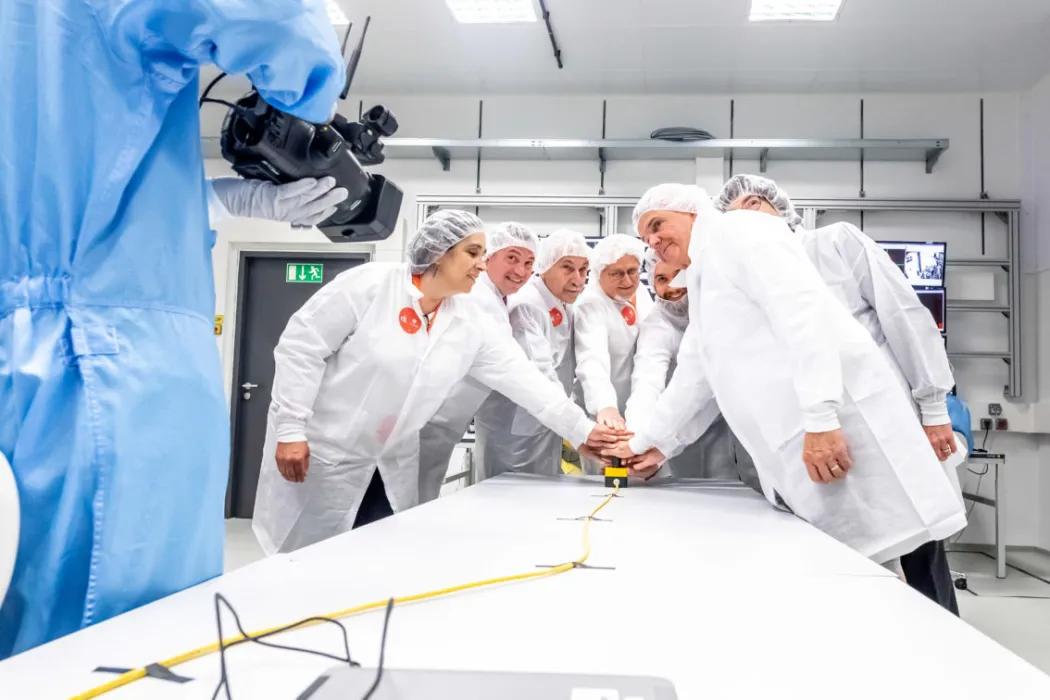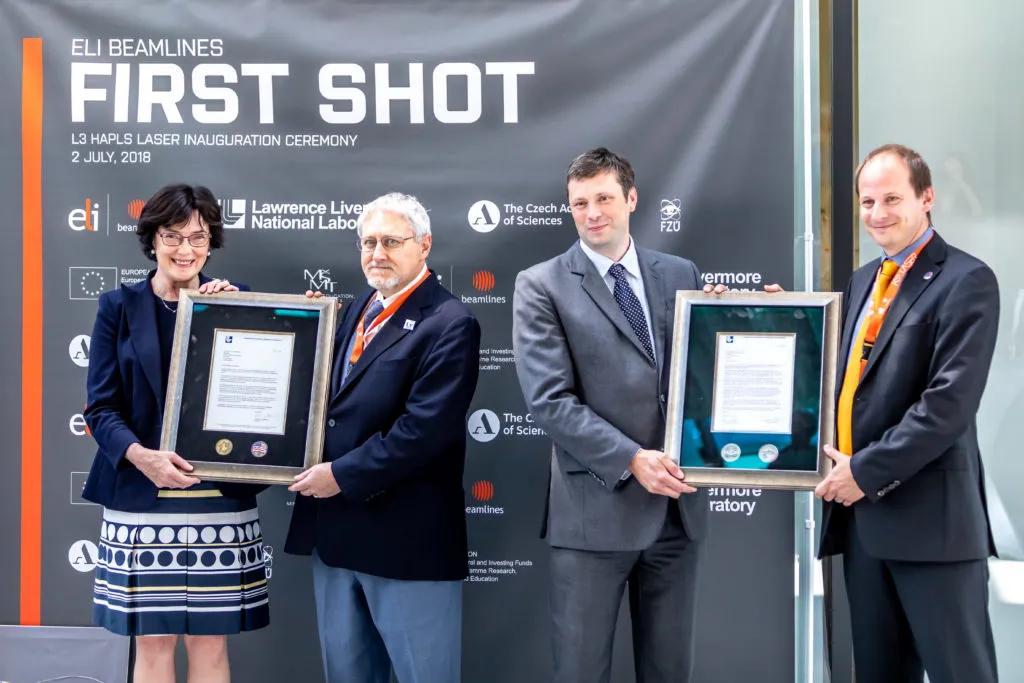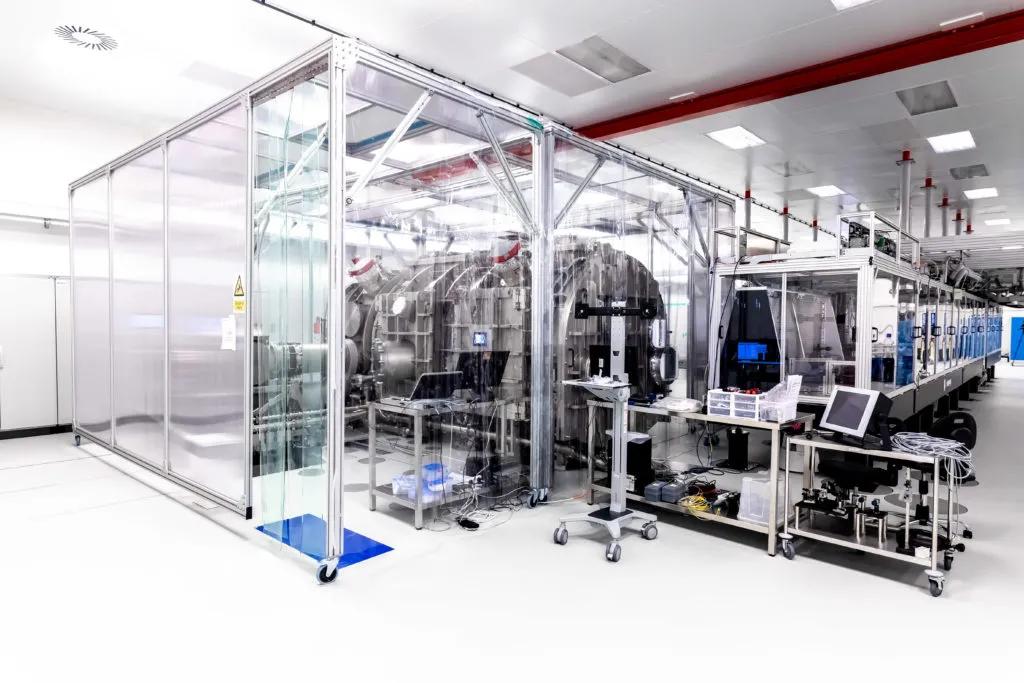The unique L3-HAPLS laser system, developed by the Lawrence Livermore National Laboratory (LLNL) for ELI Beamlines, was on July 2, 2018, ceremonially launched. After evaluation by an international peer review group, it has been declared fully integrated and operational. The system is ready for integration with the experimental systems and first experiments.
The laser system L3-HAPLS represents a new generation of diode-pumped, high-energy and high-peak-power laser systems. Once completed it will set a world record for most intense diode-pumped petawatt lasers. The laser system will serve in many areas of basic and applied research. Its most significant applications include compact laser particle accelerator for new medical methods and short-wave X-ray generation for high resolution spatial and temporal resolution microscopy for material and medical research. The initial experiments will be capable of taking images with resolution orders of magnitude better from what is seen in today’s hospitals.
The first shot ceremony was attended by the Deputy Minister for Research and Higher Education section Pavel Doleček, US Ambassador Stephen B. King, President of the Czech Academy of Sciences Eva Zažímalová and representatives of the Lawrence Livermore National Laboratory, the Institute of Physics of the Academy of Sciences and international consortium ELI-DC. The program included not only the launch and the first laser shot but also a tour of the research center and a short excursion into the world of experiments through virtual reality.
“As the United States celebrates 100 years of diplomatic relations with the Czech Republic this year, this laser system, the result of strong cooperation between ELI Beamlines and Lawrence Livermore National Laboratory, is just one of many examples of the United States strong and enduring relationship with the Czech Republic. This multi-faceted relationship is based on our rock-solid security cooperation, our growing economic and commercial ties, and our long-standing history of friendship and shared values,” noted US Ambassador Stephen B. King.
“I am glad to be here with all our dear guests and friends from the United States to launch the laser system L3-HAPLS, which is one of the most significant U.S. – Czech research and technology development cooperation projects accomplished ever since. Research and development is a key area of our bilateral cooperation and this important event only confirms its potential. I am also very glad to meet at ELI Beamlines, which is, thanks to the installation of the laser system L3, the very first research infrastructure of the worldwide importance built in Central-Eastern Europe. I truly believe that this unique laser system will soon bring excellent results and attract more top researchers from the international science community to the Czech Republic,” said Deputy Minister Doleček.
L3-HAPLS was designed, developed and constructed by Lawrence Livermore National Laboratory’s NIF and Photon Science (NIF&PS) Directorate and delivered to ELI Beamlines in June 2017. Developing of this unique laser lasted for more than five years. Since September 2017, an integrated team of scientific and technical staff from LLNL and ELI Beamlines have worked intensively on the installation. By the end of 2017, four blocks of laser diode units were launched to provide the 800 kW light pulses. The diode blocks installed here are the world’s most intense diode light sources ever-produced. Afterwards, in the spring of 2018, the main L3-HAPLS laser amplifier was put into operation, enabling the testing of the complete laser chain. The system has now been ramped to its first operation point of 16 joules and a 27 femtosecond pulse duration at a 3.3 hertz (Hz) repetition rate (3.3 times per second), equivalent to a peak power of ~0.5 Petawatt after the pulse compressor. This operational point was established to learn and conduct first experiments at a moderate repetition rate.
The L3 laser system is the proud holder of many records – not only it will become the world’s largest petawatt laser system, but it also has the world’s most powerful pulsed laser diodes and the largest optometric vacuum structure ever designed and manufactured in the Czech Republic.




